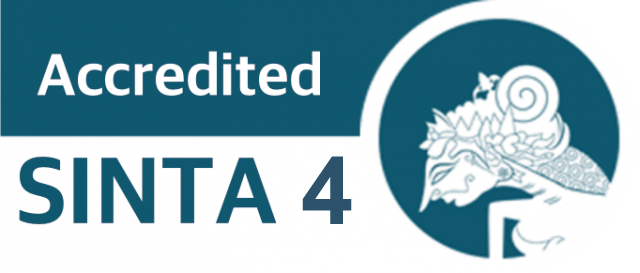Development of an E-worksheet Based on Problem-Based Learning with Prompting Question Technique on Chemical Equilibrium Material
DOI:
10.29303/jpm.v20i6.9801Published:
2025-09-21Issue:
Vol. 20 No. 6 (2025)Keywords:
Chemical Equilibrium; E-worksheet; Problem-Based Learning; Prompting QuestionArticles
Downloads
How to Cite
Downloads
Metrics
Abstract
Students' misunderstandings and low level of active involvement in learning chemical equilibrium and the incomplete application of problem-based learning models. This study was motivated by students' misconceptions and low active involvement in learning chemical equilibrium material. In addition, the implementation of the problem-based learning model has not been fully realized, and students still experience difficulties in connecting and applying chemical concepts to everyday life. The purpose of this study is to develop a problem-based learning e-worksheet with prompting question techniques on chemical equilibrium material that is valid and practical. The method used is research and development (R&D) with the Plomp model, which includes the preliminary research and prototyping phases. Validity analysis techniques were analyzed using Aiken's V scale, and practicality analysis techniques were analyzed using a percentage formula. The validity analysis yielded an average score of 0.925, which is considered valid. The practicality test results showed that the e-worksheet is highly practical, with an average score of 94.375% from teachers and 89.38% from students. Based on the results of the study, it can be concluded that the development of an e-worksheet based on problem-based learning with prompting question techniques on chemical equilibrium material is valid and very practical.
References
I. S. Prastyo and Hartono, “Jurnal phenomenon,” Phenomenon, vol. 10, no. 1, pp. 25–35, 2020.
T. Mulyani, S. Agustina, and A. Wiraningtyas, “Perbandingan Efektivitas Hasil Belajar Siswa Menggunakan Model Pembelajaran Problem Based Learning Pada Materi Asam Basa Dan Stoikiometri,” J. Redoks J. Pendidik. Kim. dan Ilmu Kim., vol. 5, no. 1, pp. 30–38, 2022.
S. Marfu’a and R. T. Astuti, “Analisis Kesulitan Belajar Siswa Dalam Memahami Materi Kesetimbangan Kimia,” Pros. Semin. Nas. Pendidik. Kim. 2022, no. 1, pp. 297–307, 2022.
P. Kajornklin, K. Seeboonruang, P. Jarujamrus, and S. Supasorn, “Learning Difficulties in High School Chemistry: The Case of Chemical Equilibrium,” Int. J. Sci. Educ. Teach., vol. 1, no. 3, pp. 121–127, 2022, [Online]. Available: https://doi.org/10.14456/ijset.2022.11
R. Ardianti, E. Sujarwanto, and E. Surahman, “DIFFRACTION: Journal for Physics Education and Applied Physics Problem-based Learning: Apa dan Bagaimana,” Diffr. J. Phys. Educ. Appl. Phys., vol. 3, no. 1, pp. 27–35, 2021, [Online]. Available: http://jurnal.unsil.ac.id/index.php/Diffraction
A. M. Costa, N. Escaja, C. Fité, M. González, S. Madurga, and E. Fuguet, “Problem-Based Learning in Graduate and Undergraduate Chemistry Courses: Face-to-Face and Online Experiences,” J. Chem. Educ., vol. 100, no. 2, pp. 597–606, 2023, doi: 10.1021/acs.jchemed.2c00741.
A. Bentri, A. Hidayati, and U. Rahmi, Teori Belajar Dan Model Pembelajaran. Jakarta: Kencana, 2019.
Trianto, Mendesain Model Pembelajaran Inovatif Progresif, Pertama. Jakarta: Jakarta : Kencana Prenada Media Group, 2009.
Y. Kurniasari and Susanah, “Penerapan Teknik Pembelajaran Probing Prompting Untuk Mengetahui Kemampuan Penalaran Matematika Siswa Kelas 7 G Di Smpn 1 Rejoso,” Mathdunesa, vol. 2, no. 1, 2013.
U. Kalsum, N. A. Humairah, and M. Sabaruddin, “Penerapan Model Problem Based Learning Teknik Probing Prompting terhadap Pemahaman Konsep Fisika,” J-HEST J. Heal. Educ. Econ. Sci. Technol., vol. 1, no. 1, pp. 55–64, 2022, doi: 10.36339/jhest.v1i1.21.
R. Sagita, F. Azra, and M. Azhar, “Pengembangan Modul Konsep Mol Berbasis Inkuiri Terstruktur Dengan Penekanan Pada Interkoneksi Tiga Level Representasi Kimia Untuk Kelas X Sma,” J. Eksakta Pendidik., vol. 1, no. 2, p. 25, 2017, doi: 10.24036/jep.v1i2.48.
A. P. Wulandari, A. A. Salsabila, K. Cahyani, T. S. Nurazizah, and Z. Ulfiah, “Pentingnya Media Pembelajaran dalam Proses Belajar Mengajar,” J. Educ., vol. 5, no. 2, pp. 3928–3936, 2023, doi: 10.31004/joe.v5i2.1074.
A. Anggereni, A. P. Putra, and A. Winarti, “Development of e-LKPD biology concept to improve students critical thinking skills,” JPBIO (Jurnal Pendidik. Biol., vol. 7, no. 1, pp. 106–114, 2022, doi: 10.31932/jpbio.v7i1.1479.
I. Sriwahyuni, E. Risdianto, and H. Johan, “Pengembangan Bahan Ajar Elektronik Menggunakan Flip Pdf Professional Pada Materi Alat-Alat Optik Di Sma,” J. Kumparan Fis., vol. 2, no. 3, pp. 145–152, 2019, doi: 10.33369/jkf.2.3.145-152.
A. Prabowo, “Penggunaan Liveworksheet dengan Aplikasi Berbasis Web untuk Meningkatkan Hasil Belajar Peserta Didik,” J. Pendidik. dan Teknol. Indones., vol. 1, no. 10, pp. 383–388, 2021, doi: 10.52436/1.jpti.87.
T. Plomp and N. Nieveen, “Educational Design Research Educational Design Research,” Netherlands Inst. Curric. Dev. SLO, pp. 1–206, 2013, [Online]. Available: http://www.eric.ed.gov/ERICWebPortal/recordDetail?accno=EJ815766
L. R. Aiken, “Three coefficients for analyzing the reliability and validity of ratings, educational and psychological measurument,” Educ. Psychol. Meas., vol. 45, no. 1, pp. 131–142, 1985.
M. M. Sanaky, “Analisis Faktor-Faktor Keterlambatan Pada Proyek Pembangunan Gedung Asrama Man 1 Tulehu Maluku Tengah,” J. Simetrik, vol. 11, no. 1, pp. 432–439, 2021, doi: 10.31959/js.v11i1.615.
Sayyida Nafisa, Muhamad Rohadi, Ali Ahmad, Akmal Fadhillah, Maura Febrianti Z, and Yulia Rahmadhar, “Pengembangan Lembar Kerja Peserta Didik (Lkpd) Ipaberbasis Model Problem Based Learning (Pbl) Di Kelas,” J. Padamu Negeri, vol. 2, no. 1, pp. 19–25, 2025, doi: 10.69714/vrrpc385.
I. Sukmawati and M. A. Ghofur, “Pengembangan E-LKPD Berbasis Problem Based Learning Terintegrasi Keterampilan 4C untuk Meningkatkan Kemampuan Berpikir Kritis Peserta Didik pada Mata Pelajaran Ekonomi,” J. Paedagogy, vol. 10, no. 4, p. 1020, 2023, doi: 10.33394/jp.v10i4.8626.
Depdiknas, “Panduan Pengembangan Bahan Ajar dan Media,” Dep. Pendidik. Nas., pp. 1–26, 2008.
E. F. K. Nisak and E. Susantini, “Pengembangan E-LKPD Perubahan Lingkungan Berbasis Problem Based Learning Untuk Meningkatkan Kemampuan Pemecahan Masalah Peserta Didik,” Bioedu Berk. Ilm. Pendidik. Biol., vol. 12, no. 3, pp. 683–694, 2023, [Online]. Available: https://ejournal.unesa.ac.id/index.php/bioedu
Z. Samawati and Y. S. Rahayu, “Profil Validitas dan Kepraktisan E-LKPD Tipe Flipbook berbasis Contextual Teaching and Learning untuk Melatihkan Keterampilan Berpikir Kritis pada Materi Transpor Membran,” Berk. Ilm. Pendidik. Biol., vol. 10, no. 2, pp. 385–396, 2021, doi: 10.26740/bioedu.v10n2.p385-396.
D. Vitasari and S. Rohayati, “Pengembangan Lembar Kegiatan Peserta Didik (LKPD) Berbasis Pendekatan Saintifik Pada Mata Pelajaran Administrasi Pajak Kelas XI Di SMK Negeri Mojoagung,” J. Pendidik. Akunt., vol. 6, no. 2, pp. 117–182, 2018.
E. Estuhono, R. Ratnawati, and R. B. Arista, “pengembangan e-lkpd berbasis steam berbantu canva pokok bahasan materi dan perubahannya pada pembelajaran berdiferensiasi di sekolah dasar,” J. Inov. Pendidik. dan Teknol. Inf., vol. 5, no. 2, pp. 230–241, 2024, doi: 10.52060/jipti.v5i2.2200.
Nadera Beka Adenolira, H. Amir, and Elvinawati, “Pengembangan E-Lkpd Berbasis Guided Discovery Learning Pada Materi Laju Reaksi,” Alotrop, vol. 7, no. 2, pp. 55–66, 2023, doi: 10.33369/alo.v7i2.30766.
Kosasih, Pengembangan Bahan Ajar, vol. 3, no. 1. 2015. [Online]. Available: http://dx.doi.org/10.1016/j.bpj.2015.06.056%0Ahttps://academic.oup.com/bioinformatics/article-abstract/34/13/2201/4852827%0Ainternal-pdf://semisupervised-3254828305/semisupervised.ppt%0Ahttp://dx.doi.org/10.1016/j.str.2013.02.005%0Ahttp://dx.doi.org/10.10
D. A. Nugraha, A. Binadja, and Supartono, “Pengembangan Bahan Ajar Reaksi Redoks Bervisi SETS, Berorientasi Konstruktivistik,” J. Innov. Sci. Educ., vol. 2, no. 1, p. 28, 2013, [Online]. Available: http://journal.unnes.ac.id/sju/index.php/jise
T. APMIYANTI and Y. YERIMADESI, “Validitas Dan Praktikalitas E-Lkpd Interaktif Berbasis Guided Discovery Learning Berbantuan Liveworksheet Pada Materi Hidrokarbon Untuk Fase F Sma,” Sci. J. Inov. Pendidik. Mat. dan IPA, vol. 4, no. 4, pp. 431–438, 2024, doi: 10.51878/science.v4i4.3492.
D. N. Cahyani and K. R. Pertiwi, “Pengembangan E-Lkpd Berbasis Pbl Materi Hormon Reproduksi Untuk Meningkatkan Literasi Kesehatan Reproduksi,” J. Edukasi Biol., vol. 10, no. 2, pp. 191–203, 2024, doi: 10.21831/edubio.v10i2.21810.
R. Y. Putri, Erviyenni, and Herdini, “Pengembangan Lembar Kerja Peserta Didik Elektronik (E-LKPD) Berbasis Problem Based Learning Menggunakan Liveworksheet PADA Materi Kimia Hijau Kelas X SMA/MA,” J. Pendidik. Kim. Undiksha, vol. 8, no. 2, pp. 13–20, 2024, [Online]. Available: https://ejournal.undiksha.ac.id/index.php/JJPK
Author Biographies
Putry Amanda, Department of Chemistry Education, Faculty of Mathematics and Natural Science, Padang State University
Dwi Finna Syolendra, Department of Chemistry Education, Faculty of Mathematics and Natural Science, Padang State University
License
Copyright (c) 2025 Putry Amanda, Dwi Finna Syolendra

This work is licensed under a Creative Commons Attribution 4.0 International License.
The following terms apply to authors who publish in this journal:
1. Authors retain copyright and grant the journal first publication rights, with the work simultaneously licensed under a Creative Commons Attribution License 4.0 International License (CC-BY License) that allows others to share the work with an acknowledgment of the work's authorship and first publication in this journal.
2. Authors may enter into separate, additional contractual arrangements for the non-exclusive distribution of the journal's published version of the work (e.g., posting it to an institutional repository or publishing it in a book), acknowledging its initial publication in this journal.
3. Before and during the submission process, authors are permitted and encouraged to post their work online (e.g., in institutional repositories or on their website), as this can lead to productive exchanges as well as earlier and greater citation of published work (See The Effect of Open Access).











